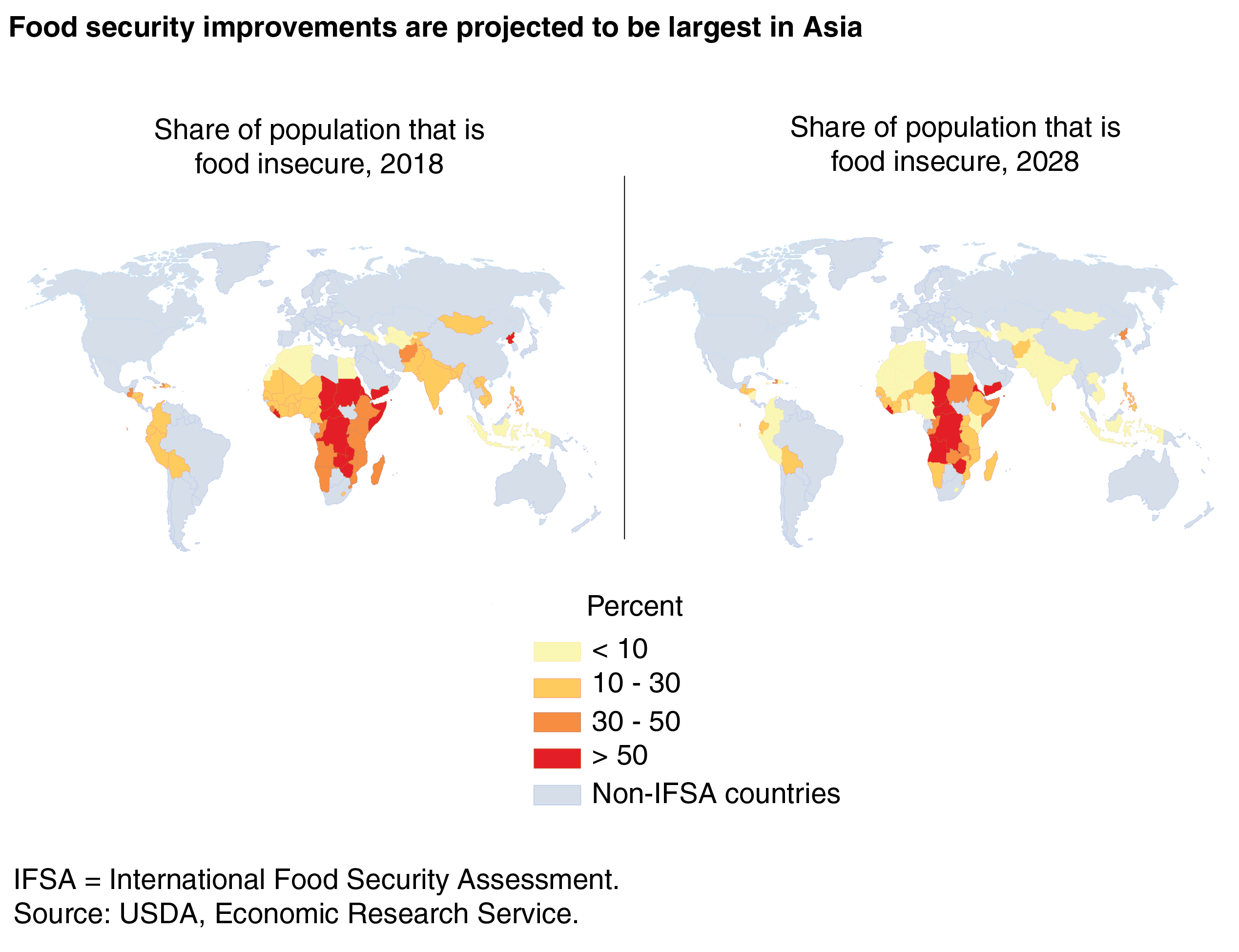
International Food Security Expected To Improve, But Regional Differences Persist
- by Birgit Meade, Karen Thome and Alex Melton
- 11/5/2018
In 2018, 21 percent of the population in 76 low- and middle-income countries, all of which are historic or current food aid recipients, is estimated to be food insecure. This means that about 782 million people out of a population of 3.7 billion consume less than a daily caloric target of 2,100 calories. Based on projected income growth and sustained low food prices, by 2028, the share and the number of food-insecure people in these countries are expected to decline to 10 percent and 446 million, respectively. Food insecurity is also projected to become less intense over the coming decade, reflected by a decline in the food gap in all regions and in most countries, from a total of 36.1 million metric tons of food in grain equivalent in 2018 to 23.7 million metric tons in 2028. The food gap is the amount of food needed to allow all food-insecure people to reach the caloric target.
ERS’s annual International Food Security Assessment (IFSA) uses a demand-oriented framework to estimate and project levels of food insecurity at a national level. The model projects per capita food consumption based on prices and income and evaluates it against a daily caloric target of 2,100 calories per person per day, a level necessary to sustain life at a moderate level of activity. IFSA only looks at access to sufficient calories when assessing food security. While questions concerning proper use and stability of food supplies are important, food access indicators can inform decision-makers about shortfalls and progress in the context of international comparisons.
Projected income growth is positive in almost all countries included in the underlying analysis, even though rates are lower than in the early 2000s. Rising oil and mineral prices over the projection period help improve incomes in food-exporting countries, and strong economic growth in Asia, particularly in India and Southeast Asia, combined with slowing population growth, all contribute to increasing per capita incomes and improved food security situations by 2028.
At the same time, international food prices are projected to remain low, as world supplies continue to grow. While food prices in some countries reflect trends in international markets, other countries encounter significant barriers to trade that can lead to sudden food price increases in response to local shortages. Likewise, exchange rate fluctuations and inflation can affect domestic food prices, as weak currencies make it more expensive to import food. Increases in food demand can be met by domestic production and imports. In most regions, production gains are expected to come from improved yields.
This article is drawn from:
- Thome, K., Meade, B., Daugherty, K. & Christensen, C. (2018). International Food Security Assessment, 2018-28. U.S. Department of Agriculture, Economic Research Service. GFA-29.


